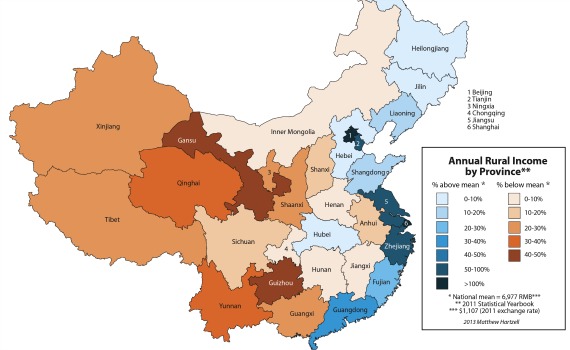At The Atlantic, Matt Schiavenza comments on a series of maps produced by Matt Hartzell which show that China’s wealth gap is a matter of coast versus interior, as well as city versus countryside.
The first map is conventional: China’s coastal provinces are relatively wealthy, and the country gradually becomes poorer the further west it goes. This is hardly an earth-shattering fact: In most countries, coastal areas are wealthier than inland areas, and it wasn’t an accident that China’s Communist Party initiated economic reforms along the coast before trying them in the rest of the country.
But the second and third maps reveal something a little less obvious. Urban disposable income in coastal cities is much higher than it is in the interior, and rural Chinese people, too, do better along the coast than they do in the interior. The data shows that, no matter if you’re a city-slicker or a farmer, you’re better off living in Jiangsu than you are in Sichuan. [Source]
A fourth map in Hartzell’s original post shows that the coastal provinces also tend to have less pronounced urban-rural divides, while a final map shows different regions’ varying levels of urbanization.








